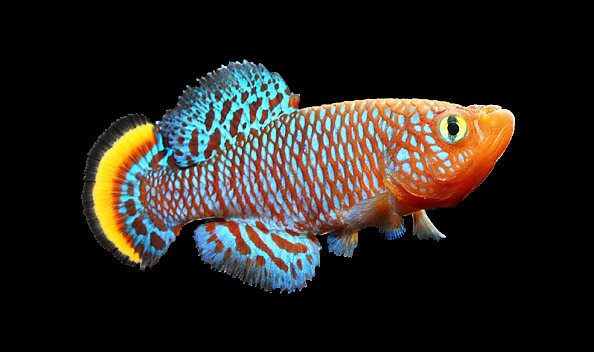A type of African fish that lives for only 4-6 months — ideally suited to its perpetually disappearing temporary habitat — has become a new model organism for the study of aging. Researchers at Stanford University are using new technology that allows them to edit specific genes in a series to understand some of the biggest challenges of modern biology, such as how complex characteristics like aging are encoded by genomes.

“We have created a resource to test the impact of genes on aging and age-related diseases in a rapid and high throughput manner,” Dr. Anne Brunet of Stanford University’s Brunet Lab, lead researcher of the study, told The Speaker.
“Our pipeline should allow rapid screening for genes that are important for modulating the aging process in an organism that shares a lot of characteristics with us.”
Traditionally, aging researchers have worked much with short-lived yeast, worms and other invertebrates in order to study effects across lifespan and across generations. But these creatures have little in common with humans, the primary consideration of the work of many researchers. Among the species more similar to humans, even the laboratory mouse lives 1 1/2 to 3 years.
The team used the African turquoise killifish, in which are combined both features shared with other vertebrates and relatively short lifespan — the fish complete the full course of their lives in only 4-6 months within temporary ponds of water that dry up when the seasons change in southeastern Africa.
The researchers used new genetic tools to create mutant killifish, which they have since made available to the entire research community.
“We decided to use the recently developed gene-editing technology called CRISPR/Cas9 to manipulate genes in the African killifish because this technology allows us to not only specifically delete genes, but also to precisely change a specific base pair in the genome. These are key steps in transforming an organism into a model system because they allow us to abrogate or specifically modify the function of key genes (aging and longevity genes) and then test the consequences of this on characteristic of interest (lifespan).”
The ability to edit and observe the changes of single genes is so important because a single gene can be the key to understanding the expression of many other genes.
“Lifespan is likely determined by a complex network involving many genes. That being said, it is also interesting to note that mutations in just one gene can drastically alter the aging process, which suggests that some genes are pivotal “nodes” in the network. It will be interesting to systematically dissect this network and identify the ‘hubs.'”
The wide variety of mutable killifish made available will provide scientists with fish they can screen for particular genes that may slow or speed up — or reverse — aging and age-related diseases.
“We have also developed this African killifish into a model organism that hopefully will be used by many, both in academia and industry, for potential therapies for aging or age related diseases,” Brunet told us. “Furthermore, there is an explosive amount of variations or mutations being identified in the human genome given the rise in personalized medicine (also known as precision medicine). So there is a need to understand the function of these variants at the organismal level, and this fish model could help do that in a rapid and high throughput manner.”
The report, “A platform for rapid exploration of aging and diseases in a naturally short-lived vertebrate,” was completed by Brunet et al., and was published in the journal Cell.
